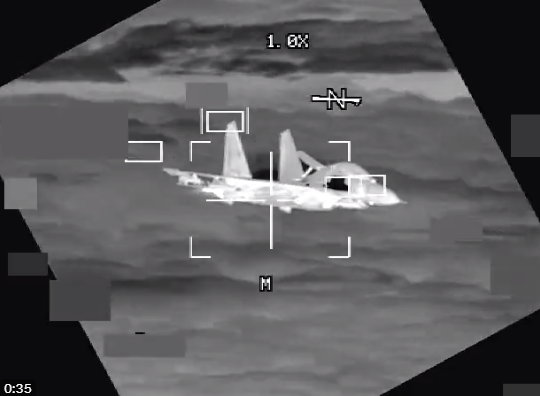In a disconcerting incident above the South China Sea, a Chinese fighter jet flew within a mere 10 feet of a U.S. Air Force B-52 bomber, the U.S. Indo-Pacific Command confirmed. The harrowing encounter, which took place on Tuesday, witnessed the Chinese pilot approaching the B-52 with "uncontrolled excessive speed," jeopardizing the safety of both aircraft.
"The maneuver demonstrated not just poor airmanship but a blatant disregard for international air safety norms," the Indo-Pacific Command expressed in a press release. Concerns are growing regarding such perilous tactics. "The pilot's unawareness of the near-collision magnitude is deeply unsettling," the release added.
#USINDOPACOM Statement on #PRC Unprofessional Intercept: "A People’s Republic of China J-11 pilot executed an unsafe intercept of a U.S. Air Force B-52 aircraft which was lawfully conducting routine operations over the South China Sea..."
Read morehttps://t.co/UnCmnneAr7 pic.twitter.com/6k79Koah3V — U.S. Indo-Pacific Command (@INDOPACOM) October 26, 2023
This unsettling incident precedes a scheduled conversation between President Joe Biden and Chinese Foreign Minister Wang Yi. The leaders are set to meet at the White House, amid speculation regarding the formality of the discussion. Moreover, Secretary of State Antony Blinken and national security adviser Jake Sullivan are also expected to meet Wang Yi this week.
With the APEC Summit around the corner in San Francisco, there is anticipation regarding a potential sideline meeting between Biden and Chinese President Xi Jinping. However, both parties have remained tight-lipped about any finalized plans.
Ely Ratner, the Pentagon's top official for Indo-Pacific security, voiced increasing concern regarding China's escalating aggressive behavior in the region. He highlighted a surge in instances of Chinese pilots acting coercively and recklessly against U.S. aircraft. "The spike in such incidents, numbering over 180 since late 2021, indicates a systematic effort to alter U.S. operations in the area," Ratner remarked.
Communication channels between the military leadership of the U.S. and China remain silent, exacerbating concerns. Beijing ceased communications following Nancy Pelosi's Taiwan visit, which didn't sit well with Chinese authorities. Adm. John Aquilin of INDOPACOM said, "My requests for dialogue with my Chinese counterparts have been unanswered for over two years."
The U.S. National Defense Strategy has identified China as a formidable competitor in terms of military prowess, economic influence, and global outreach. With an expansive standing army, an impressive naval fleet, and a dominant air force, China has consistently asserted its territorial claims, notably in the South China Sea.
China's aggressive posturing towards Taiwan in 2022, including missile overflights and military exercises, underscores the escalating tensions. Despite Xi's claims of seeking peaceful Taiwanese unification, military means remain on the table.
Footage released by the U.S. on Thursday provides a stark visual of the near-collision between the Chinese jet and the American bomber. These incidents, coupled with last week's Pentagon release showcasing China's aggressive operations against U.S. aircraft, underscore the rising stakes and urgencies in the region.






